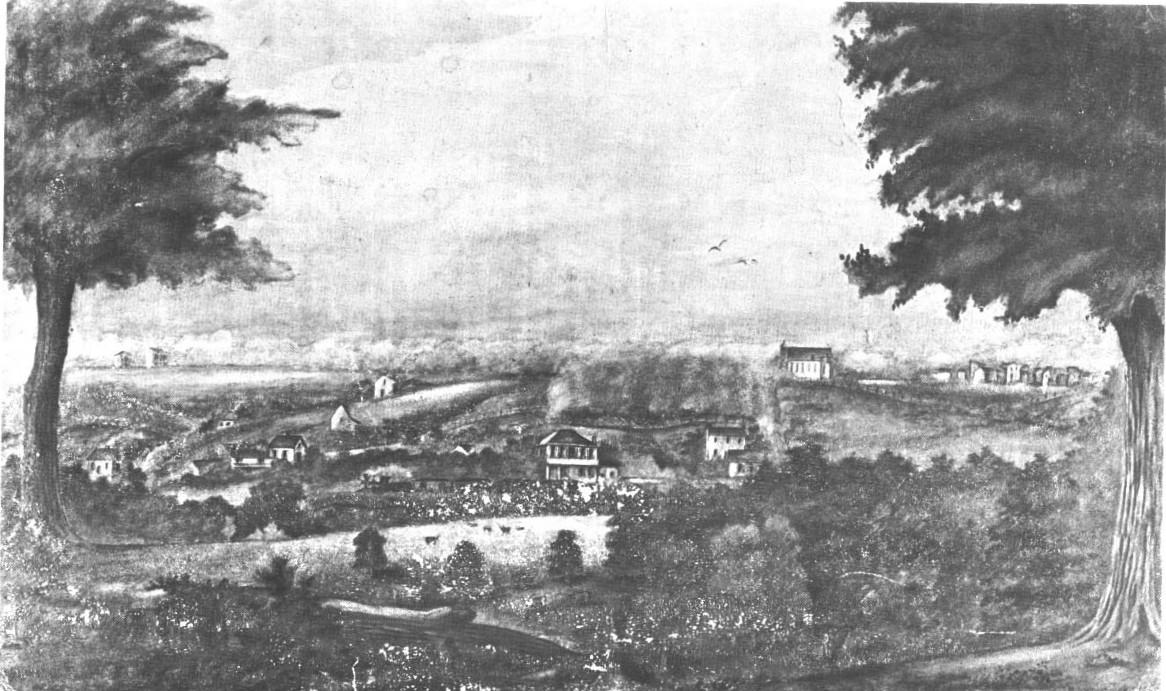
Bob Corbett comments -- Feb. 15, 2003
One of the earliest residents of Cheltenham after the railroad came in 1852 and when Cheltenham really became a community, was Albert Muegge. He was the postmaster and it was at his home/post office that the Confederate Raid was made in 1864.
In Muegge's later years, the 1870s, he did a series of watercolors of Cheltenham as he remembered it being in the 1860s. These watercolors are owned by the Missouri Historical Society, but not on display.
In the above black and white reproduction of a one of Muegge's drawing is an image of St. James Church as it was when it was in 1860s. It is the large white building with the black roof on the upper right side of the image.
The perspective of the painting would be from about Hwy I-44 is, looking north toward Muegge's house (the very large 2-story in the foreground right).
To the right of Muegge's house and looking up Tamm, first one notes the large 2-story white house on the left side of Tamm. That is the O'Gorman house at 1527 Tamm and it looks identical as it does today in 2003. The home is the oldest standing home in Dogtown and while city records list it as being built in 1860, documents found in the foundation of the home suggest it was built in 1852-54.
Up higher on Tamm, on the right hand side of the street is St. James Church. John O'Gorman's brother-in-law Richard Tobin built the church sometime after the mission was founded in 1860. This is the clearest of the two images of this church I have seen. It burned in 1891.
Also fascinating to me large house to the LEFT of the Muegge house and back at bit. I wonder if that can be one of the homes on Villa and still be standing? The one that is highest on the hill in the 6500 block.
This photo appears in the article: "Some New Views of Old Cheltenham" by George R. Brooks. The Bulletin, October 1965. Missouri Historical Society. Pp. 32-34. Note that the article has a couple of other reproductions of Muegge's watercolors. The originals are not on display, but held by the Missouri Historical Society.
The only other image of this early church may be seen below
This is a part of the 1875 Dry and Compton pictorial map. At the very top of the map and in dead center is St. James Church. This is the only other image of the "first" church which I have seen.
The O'Gorman home is near the top left corner, the two-story home.
For identification of other buildings on this map please
The page where the 1875 map is displayed and discussed.
| HOME | DOGTOWN |
| Bibliography | Oral history | Recorded history | Photos |
| YOUR page | External links | Walking Tour |